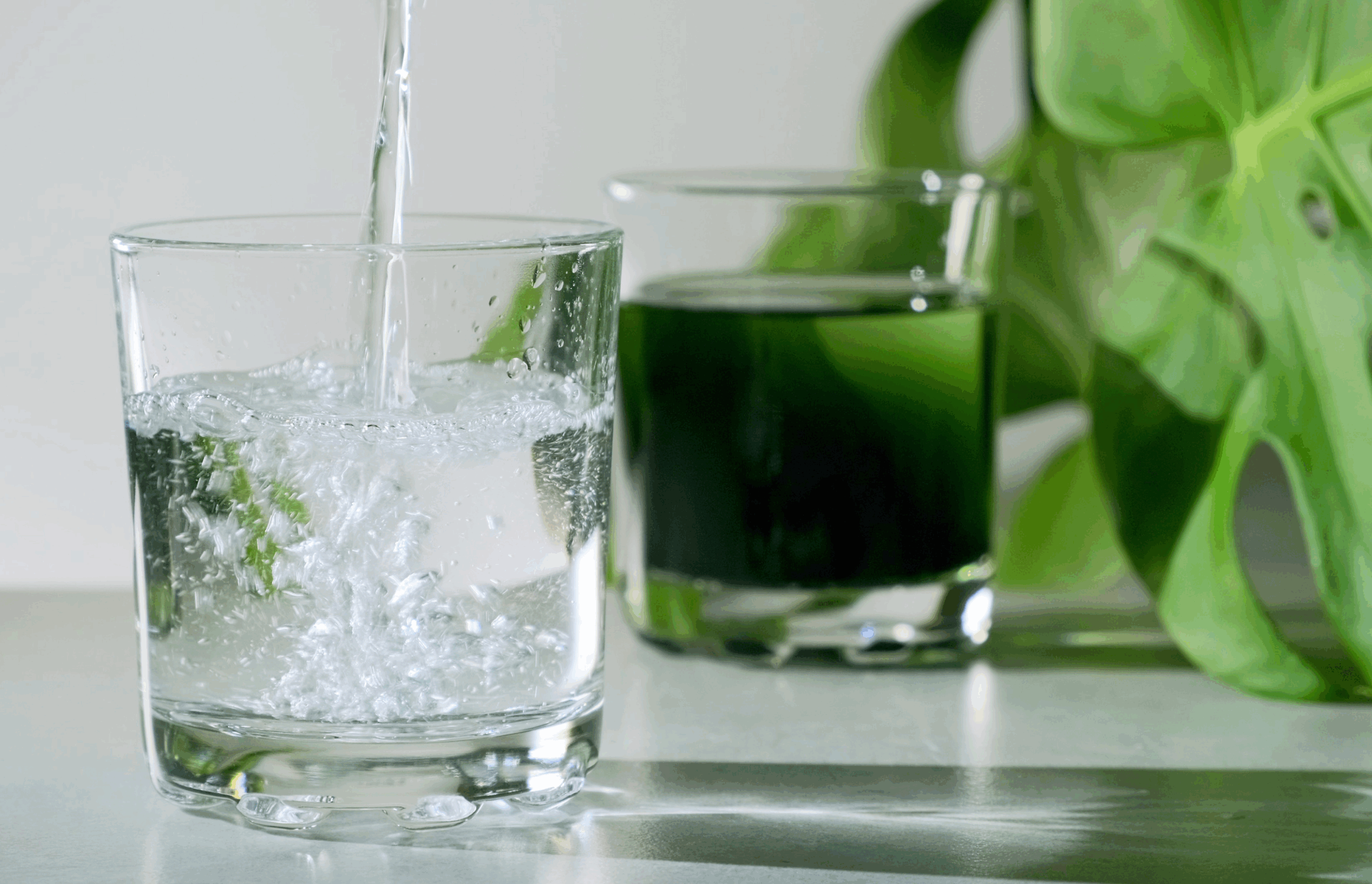I’m Over Fear-Based Marketing in the Wellness Industry

Why Fear Based Marketing Is OUT
Do you ever feel like everywhere you turn, someone is telling you, on some channel, that everything you’re doing in your life is wrong? Whether it's social media, podcasts or the news, we’re constantly bombarded with messages that we're poisoning ourselves, harming our kids in some way, or outright destroying the planet. It’s tiring to say the least.
But here’s the thing that really gets me. Just as you start to feel really bad about yourself, the solution magically appears, often from the very person who was scaring the sh*t out of us in the first place! “Just buy this product or follow this 20-step program, and you will be saved, your kids will thrive, and the planet will last forever! Don’t worry, you can trust me, I’m a professional!”.
To be clear, I’m not saying there aren’t some scary issues in the world—there are plenty of alarming things happening in our food system, the environment, and with the products we use. And quite honestly, some of these concerns warrant a blunt P.S.A. But from everything I’ve been seeing lately—especeially on social media—these scare-to-care tactics are getting out of hand.
The marketing world even has a name for this approach: “fear appeals”—a strategy that exaggerates, skews, or omits facts to fit a company’s or influencer’s narrative. Since starting Haskill Creek, the whole team has become more acutely aware of these tactics. So in this post, I want to give you the lay of the land, show you how to spot red flags, and share how we’re (as one small store in Montana) taking a different approach to health & wellness.
Then, maybe, just maybe, we can all sleep a little better at night. Ready? Let’s dive in…
What Is Fear Appeal Marketing?
Marketing thrives on emotions—whether it’s nostalgia, social validation, or fear. Fear appeals work differently because instead of inspiring or reassuring, they make us feel like we have no choice but to act. It triggers emotions like anxiety, urgency, or concern, pushing consumers to take immediate action—whether it's buying a product, avoiding a risk, or changing behavior.
While fear-based messaging can be effective—think public health campaigns warning about smoking—it often backfires in commercial marketing:
-
Backlash & Resistance – If consumers feel manipulated, they tune out.
-
Desensitization – Overuse leads to emotional fatigue, making future warnings less effective.
-
Loss of Trust – Exaggerated risks can erode a brand’s credibility.
-
Consumer Anxiety – Alarmist messaging overwhelms people, leading to stress and decision paralysis.
-
Ethical Concerns – Using fear to drive sales rather than educate is manipulative.
Have you been feeling any of these lately? I definitely have. With fear-based marketing becoming more prevalent, it’s important to recognize when brands are using these tactics to manipulate rather than inform—so how can you tell the difference?
How to Spot Red Flags in Fear-Based Marketing
This might sound like a stretch, but stay with me—fear based marketing tactics reminds me of one of my favorite shows of all time, Law & Order.
If you’ve watched as many episodes as I have (I can’t decide if I like the original or SVU better!), you start recognizing the show’s formula: A suspect appears way too early, someone reacts too dramatically, or a character conveniently inserts themselves into the case. The real criminal is never the obvious choice.
Fear-based marketing works the same way. Brands use misdirection—turning everyday ingredients into villains while conveniently offering their “safe” alternative. But just like a seasoned Law & Order fan sees through plot twists, you can learn to spot the red flags in fear-based marketing campaigns too.
Here are three major clues that something might not be as scary—or as urgent—as it seems:
Clue #1: Overblown Risks & Everyday Villains
Some brands turn small risks into catastrophic threats, making normal behaviors seem dangerous.
Example: The demonization of seed oils, where influencers make statements like “Seed Oils Are Ruining Your Life!” or “Seed Oils Are Pure Poison!”
Before you start worrying about every micro-dose of seed oil you may be consuming, ask yourself this:
-
What peer-reviewed studies actually confirm that all seed oils are poison?
-
Is it the seed oil itself that’s unhealthy, or is it the highly processed foods that usually contain seed oils? (correlation or causation?)
-
What levels of seed oil consumption are actually harmful?
Takeaway: Scary headlines don’t always tell the full story. If it feels like it’s extreme, do a little digging, look at the research, and make informed choices based on facts, not fear. Just remain wary of any influencer that is calling them the devil, then trying to upsell you on their non-seed oil brand.
Note: Be on the lookout for our take on seed oils in coming weeks!
Clue #2: Scary Stats Without Context
Some brands or influencers throw out shocking statistics—but leave out crucial details.
Example: Dr. Mark Hyman’s Instagram post on lead in protein powders. His messaging might make you want to toss all your protein powder immediately—but before panicking, consider:
-
What report is he citing? Was it peer-reviewed?
-
Who conducted the study? Do they have biases?
-
Were the results benchmarked against reasonable safety standards?
And wait a second—first, he says to avoid protein powders, but then he recommends certain brands that are supposedly better than the others (and that he profits from)?
Takeaway: Fear-driven stats without full context can mislead consumers into overreacting. Dr. Mark Hyman says a lot of smart and helpful stuff on the internet. But remember, he’s a content creator always searching for the next best post. That means that at least 20% of what he (and others like him) put out there is likely exaggerated.
Note: Check out our post analyzing this protein powder report here.
Clue #3: Fear-Driven Marketing & False Exclusivity
Some brands imply that only their product is safe, making you feel like you have no alternative.
Example: Pure Woven’s Instagram Post claiming that all synthetic workout clothes expose you to 22x the safe BPA levels—so, of course, their brand is the only “safe” choice.
Before tossing all your activewear and stocking up on Pure Woven, ask yourself:
-
Is there actual evidence supporting this claim?
-
Are all synthetic fabrics equally harmful, or are there variations?
-
Do other brands test for BPA and disclose their results?
-
Are they creating a false dilemma (e.g., "Buy our product or risk exposure")?
Takeaway: What’s that quote about stats…? “You can make statistics say anything”. This might be the case here. It’s hard to tell. But, here’s what we do know: brands that use fear to sell their own product typically oversimplify complex issues just to make their product seem like the only healthy solution. Be skeptical, ask questions, and make informed choices!
Note: Be on the lookout for our take on the workout clothing concern in coming weeks!
The Haskill Creek Approach: Transparency, Education and Balance Over Fear
We believe in facts, not fear. And we see it all day long, marketing departments exaggerating risks to push their "clean" alternatives, leaving consumers feeling anxious rather than informed. At Haskill Creek, we’re trying to take a different approach—offering clear, research backed decisions so you can make choices that align with your values, not panic-driven trends.
No one is perfect, and in the world we live in, it’s actually impossible to eliminate all risks and toxins. Instead of stressing, pick your battles and choose what’s important to you. One small change, like swapping out a plastic water bottle, buying mold-free coffee, or using cleaner laundry or dishwasher detergent, is a great step in the right direction
Take, for example, The Clean Label Project’s study on protein powders. While it claims to have found concerning levels of heavy metals, we didn’t jump on the social media bandwagon and start blasting our followers. Instead, we analyzed the findings critically—reviewing the details of the study, researched other scientific view points and provided, what we believe is an objective analysis of the facts.
Whether it’s silicone in skincare or phthalates in consumer goods, we don’t just label ingredients as bad or good. We break down what they are, where they’re found, and what the science really says—so you can decide for yourself!
Are We Being Contradictory?
You might be thinking, Isn’t this whole article a bit contradictory since Haskill Creek is a store that sells health and wellness products? Fair question. Let’s address it head-on.
Yes, we sell products we believe are better choices—but here’s the difference:
-
We don’t use fear to push sales.
-
We don’t claim that if you don’t buy from us, you’re failing your health.
-
We believe in informed choice, not pressure.
We research everything we sell to ensure it aligns with our values and ingredient checks. We’re trying to make curation our superpower, so we can do 90% of the work for you. Then let you decide from there. Do we think the products we sell are great options? Absolutely. Do we think they’re the only options? Absolutely not.
And we don’t always get it right. And this is important to admit. But we’re committed to learning, evolving, and making informed updates as new information emerges. If you ever have concerns about a product we carry—or discover something that fits our mission—we want to hear from you. We’ll always give it a second look to reevaluate if it's the right product for our store.
Because wellness isn’t about fear—it’s about empowerment, education, and balance. And that’s exactly what we stand for at Haskill Creek.

Sign up for our newsletter!
Join to get the Haskill Newsletter and be the first to learn about new products, events, and other goings-on at Haskill Creek!









